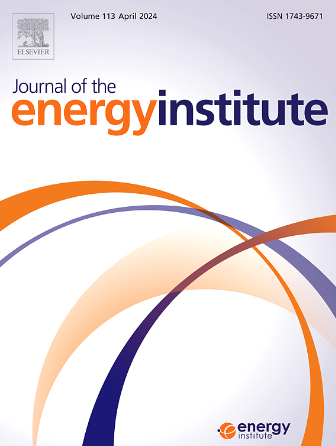Fuel consumption and exhaust emissions from Euro 6d vehicles fueled by innovative LPG/DME blend
IF 5.6
2区 工程技术
Q2 ENERGY & FUELS
引用次数: 0
Abstract
The aim of this research was to investigate the exhaust emissions from vehicles when fueled by a new and fully renewable fuel if made of bio-LPG and renewable dimethyl ether (DME), in comparison with standard gasoline. For this purpose, DME was mixed with liquefied petroleum gas (LPG) and used to fuel three bi-fuel LPG/gasoline spark-ignition engines light-duty vehicles. The suitable fuel blend was selected based on several octane tests using CFR engines. Exhaust emissions were tested over the WLTC and over the hot-start CADC cycles, as well as on the road. All Euro 6 standards were well fully met over the WLTC with both fuels. Switching from gasoline to LPG/DME fueling, the CO and NOx emission factors increased for two vehicles, whereas THC and NMHC decreased. Regarding particulates, for two vehicles the emission factors decreased, too. Generally, when the vehicles were driven on the CADC, lower gaseous emissions were observed compared to WLTC: excluding one vehicle, when switching from gasoline to LPG/DME fueling, the overall emission profiles reflected those of the same vehicles run on the WLTC. The unregulated particulate emissions measured over both testing cycles reflect what was detected for the regulated ones. Except for PN10, which was not measured, all regulated emissions were found to meet the (most severe) Euro 7 standards proposed at first by the European Commission. RDE tests showed that all vehicle emissions obtained from on-road tests were also found to meet the RDE standards, regardless of the fueling. Concerning CO2 emissions, LPG/DME fueling guaranteed a systematic decrease for all vehicles and cycles, both on road and in the laboratory. The present investigation aims at demonstrating that the innovative LPG/DME 80 %/20 % (m/m) blend not only can be deemed as potentially suitable for GHG emissions reduction, as long as both DME and propane are obtained from renewable sources, but even compliant with EN 589 and both Euro 6 and part of preliminary Euro 7 exhaust emission proposal.
以创新型液化石油气/二甲醚混合物为燃料的欧 6d 车辆的燃料消耗量和尾气排放量
这项研究的目的是调查车辆在使用由生物液化石油气和可再生二甲醚(DME)制成的新型完全可再生燃料时的尾气排放情况,并与标准汽油进行比较。为此,将二甲醚与液化石油气(LPG)混合,用于为三辆双燃料 LPG/ 汽油火花点火发动机轻型汽车提供燃料。根据使用 CFR 发动机进行的辛烷值测试,选择了合适的混合燃料。对废气排放进行了 WLTC 和热启动 CADC 循环测试以及道路测试。两种燃料在 WLTC 循环中均完全符合所有欧 6 标准。从汽油改用液化石油气/二甲醚燃料后,两辆车的一氧化碳和氮氧化物排放系数增加,而四氢大麻酚和非甲烷总烃则减少。在微粒方面,两辆车的排放系数也有所下降。一般来说,当车辆在 CADC 上行驶时,观察到的气体排放量低于 WLTC:除一辆车外,当从汽油燃料切换到 LPG/DME 燃料时,总体排放曲线反映了相同车辆在 WLTC 上行驶时的排放曲线。在两个测试周期中测得的非规范颗粒物排放反映了规范颗粒物的检测结果。除了未测量的 PN10 外,所有受管制的排放物均符合欧盟委员会最初提出的(最严格的)欧 7 标准。RDE 测试表明,无论使用何种燃料,从道路测试中获得的所有车辆排放也都符合 RDE 标准。在二氧化碳排放量方面,无论是在道路上还是在实验室中,液化石油气/二甲醚燃料都能保证所有车辆和循环的二氧化碳排放量都有系统地减少。本次调查旨在证明,只要二甲醚和丙烷都来自可再生资源,创新的液化石油气/二甲醚混合燃料(80%/20% (m/m))不仅可被视为减少温室气体排放的潜在选择,甚至还符合 EN 589 标准以及欧 6 和部分初步欧 7 废气排放建议。
本文章由计算机程序翻译,如有差异,请以英文原文为准。
求助全文
约1分钟内获得全文
求助全文
来源期刊

Journal of The Energy Institute
工程技术-能源与燃料
CiteScore
10.60
自引率
5.30%
发文量
166
审稿时长
16 days
期刊介绍:
The Journal of the Energy Institute provides peer reviewed coverage of original high quality research on energy, engineering and technology.The coverage is broad and the main areas of interest include:
Combustion engineering and associated technologies; process heating; power generation; engines and propulsion; emissions and environmental pollution control; clean coal technologies; carbon abatement technologies
Emissions and environmental pollution control; safety and hazards;
Clean coal technologies; carbon abatement technologies, including carbon capture and storage, CCS;
Petroleum engineering and fuel quality, including storage and transport
Alternative energy sources; biomass utilisation and biomass conversion technologies; energy from waste, incineration and recycling
Energy conversion, energy recovery and energy efficiency; space heating, fuel cells, heat pumps and cooling systems
Energy storage
The journal''s coverage reflects changes in energy technology that result from the transition to more efficient energy production and end use together with reduced carbon emission.
 求助内容:
求助内容: 应助结果提醒方式:
应助结果提醒方式:


